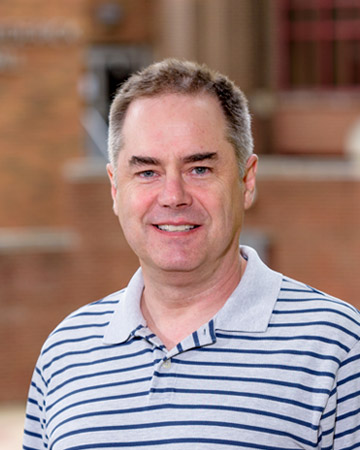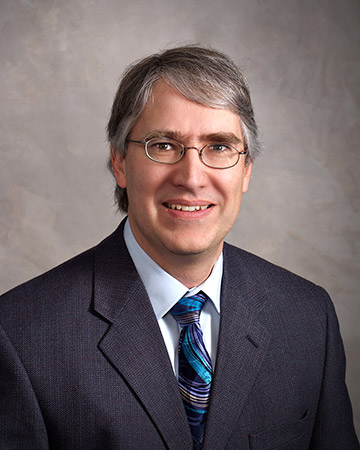Mechanical Engineering Sabbaticals Provide Opportunities for Faculty Enrichment

Brad Burchett recently returned from a sabbatical at the U.S. Army Research Laboratory
Burchett sabbatical pays off for students, U.S. Army
The U.S. Army Research Laboratory in Aberdeen, Md., is in business to develop the best technology for American soldiers. But civilians—including Rose-Hulman students—are seeing benefits from the Open Campus initiative, which teams ARL scientists and engineers with those from collaborating institutions.
For Brad Burchett, professor of mechanical engineering, a recent sabbatical at the ARL proved a useful exercise in solving real-world problems in real time. “Participating in a work environment that’s much different from what we have in academia is a very valuable experience that I can take back to the students,” he said. Burchett notes the importance of skills taught in Mechatronics (ME430), where mechanical engineering intersects with computer engineering, electronics and systems control.
Burchett says his work as a senior guest researcher at ARL “was much more hands-on experimental and leveraged my knowledge from the mechatronics class” at Rose-Hulman. “It gave me exposure to what our students will experience when they go out and the boss says ‘We don’t use that environment (that you’re familiar with); we use this one.’ You have to learn a different software, board and processor.”
Challenges that Burchett faced in creating control algorithms for control actuation systems are already translating into homework assignments. Students, he says, are “essentially re-creating the control law that I made for the actuators. I gave them one of the models and walked them through the technique that I used.”
Burchett also worked on cooperative navigation for munition swarms, which allow “parent” projectiles to aid in the guidance of “child” projectiles that have less robust navigation capabilities. He’ll present that work in January at a meeting of the American Institute of Aeronautics and Astronautics.
And in keeping with Rose-Hulman’s culture of balancing science and technology with the arts and humanities, he filled in as music director for a local church during his sabbatical, with his wife Carol as choir director.

Phil Cornwell's sabbatical took him to the U.S. Air Force Academy
Sabbatical yields professional stimulation for faculty, ideas for RHIT
Classes at the U.S. Air Force Academy begin with a cadet calling the room to order. That doesn’t happen at Rose-Hulman, but Dr. Phillip Cornwell found the two institutions have some things in common, such as an emphasis on student learning.
Cornwell, a professor of mechanical engineering, spent a year-long sabbatical at the Academy near Colorado Springs, Colo. “I had never taught at a university other than Rose-Hulman,” he noted, “So this was an excellent opportunity for me to experience the process at another institution.” He returned with fresh professional perspectives and several ideas that could benefit the ME department.
For example, the USAFA requires all faculty members to visit at least five other classes during the semester. Cornwell found this a systematic way to encourage faculty development. It’s a necessity given the high turnover of faculty serving three-year stints at the Academy, but might also enhance the flow of ideas among faculty at Rose-Hulman.
Cornwell, who taught three courses at USAFA, also took note of several projects in dynamics that might inform the mechanical systems course when it’s expanded from three to four credit hours next year. He also performed an educational research project in dynamics where he taught the class with two different orderings of topics. “One was similar to the ordering of topics we use in mechanical systems at Rose-Hulman (kinetics before kinematics),” he said, “and in the other section he used the traditional ordering. I did not see the same improvement in student performance that I saw at Rose-Hulman.”
He also found time to give invited talks at the University of Colorado, Colorado Springs and the Los Alamos National Laboratory in New Mexico. In his spare time, he worked on the 12th edition of the book “Vector Mechanics for Engineers: Dynamics,” for which he serves as lead co-author.